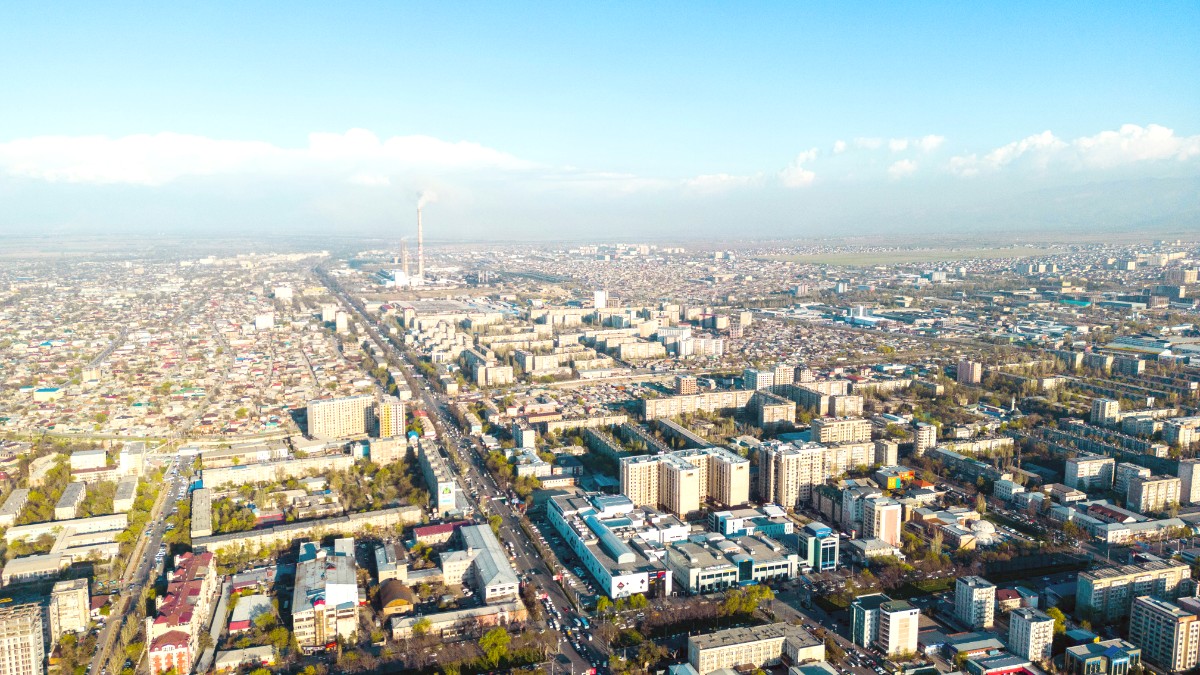
Kyrgyzstan
The city lies at approximately 800 meters (2,600 feet) above sea level. This elevation means Bishkek experiences distinct seasons, with hot summers and cold winters, avoiding the extreme high-altitude issues found elsewhere in the country. The air often feels crisp and clear, especially after rain. The Chuy River flows north, and the city utilizes canals from mountain rivers, creating green spaces.
On clear days, snow-capped peaks appear close enough to touch, beckoning adventurers. This geographic feature means a transition from urban exploration to mountain hiking is possible within an hour's drive. Few other capitals offer such convenience. Distinct climate zones—from the relatively mild valley to high alpine extremes—make the surrounding region biodiverse with varied landscapes, all accessible from Bishkek.
City planners leveraged this environment, designing wide avenues and numerous parks that integrate green spaces with the urban fabric. This design provides fresh air and recreational areas for residents and visitors alike, shaping the Bishkek experience.
The area initially served as a caravan rest stop along one of the ancient Silk Road routes, connecting East and West through Central Asia's vast steppes and mountains. This early function established its significance as a place of trade and cultural exchange. Various nomadic tribes and empires controlled the Chuy Valley, each leaving their mark. The earliest documented settlement at the site was a small fortress.
The Kokand Khanate formally established a fortress known as Pishpek in 1825. This outpost controlled trade routes and local populations, making it a target. In 1862, Russian forces captured the fortress, marking a turning point. The Russian Empire swiftly dismantled it and developed a new settlement on its ruins. This period introduced European-style urban planning, with wide, tree-lined streets and a grid system, elements remaining today. The name "Pishpek" continued for a time.
Caravan rest stop on the Silk Road.
Kokand Khanate establishes Pishpek fortress.
Russian forces capture and dismantle the fortress.
Pishpek renamed Frunze during the Soviet era.
Kyrgyzstan declares independence; Frunze reverts to Bishkek.
Following the Russian Revolution and Soviet Union's establishment, the city dramatically transformed. In 1926, Pishpek became Frunze, honoring Mikhail Frunze, a prominent Bolshevik military commander born there. This change symbolized its integration into the Soviet system. During the Soviet era, Frunze grew significantly, becoming an industrial and administrative hub. Construction of large public buildings, residential blocks, and infrastructure showcased Soviet power. Grand administrative buildings, museums, and monuments define the city's architectural landscape, a product of this period. Many large parks and boulevards developed then, adding green spaces.
With the Soviet Union's collapse in 1991, Kyrgyzstan declared independence, and the city reverted to its historical name, Bishkek. This renaming reflects the nation’s desire to reassert its unique identity and move away from its Soviet past.
Since independence, Bishkek has continued to evolve. It embraces elements of modern capitalism, with new shopping malls and private businesses alongside Soviet-era structures and traditional bazaars. The city's history reflects a blend of Turkic nomadic heritage, Russian imperial influence, and Soviet planning, now overlaid with an independent Central Asian capital's dynamism.
This rich past shapes its present, creating a city with distinct character and many stories to tell.
Bishkek is the political, economic, and cultural hub of Kyrgyzstan, a dynamic city evolving while retaining its deep roots. Its urban landscape features wide boulevards, many shaded by mature trees. Marble-faced public buildings, often from the Soviet era, house government ministries, museums, and cultural institutions. Adjacent are numerous Soviet-era apartment blocks, residential backbone, showing planned development.
This structured aesthetic contrasts with traditional Central Asian elements. The sprawling Osh Bazaar offers a sensory experience of sights, sounds, and smells. Here, ancient Silk Road trade traditions come alive as vendors sell produce, spices, textiles, and household goods. Modern developments, including sleek shopping malls, contemporary cafes, and stylish restaurants, dot the city, reflecting its growing economy and global integration. This blend creates an unique urban fabric where old and new, East and West, coexist and intertwine.
Manas International Airport (FRU) is the main gateway for travelers.
A starting point for trips to Ala-Archa National Park, Issyk-Kul Lake, and other mountain destinations.
A relaxed city with markets, green parks, and diverse dining options.
Bishkek is a main location for travelers exploring Kyrgyzstan's mountainous landscapes and nomadic culture. Its well-connected international airport, Manas International (FRU), is the main entry point for most visitors. From Bishkek, travelers easily organize trips to the nearby Ala-Archa National Park, a stunning alpine wilderness just an hour's drive away. Further excursions to the vast Issyk-Kul Lake, remote Song-Kol Lake, or the trekking paradise of Karakol typically start with logistics arranged in Bishkek.